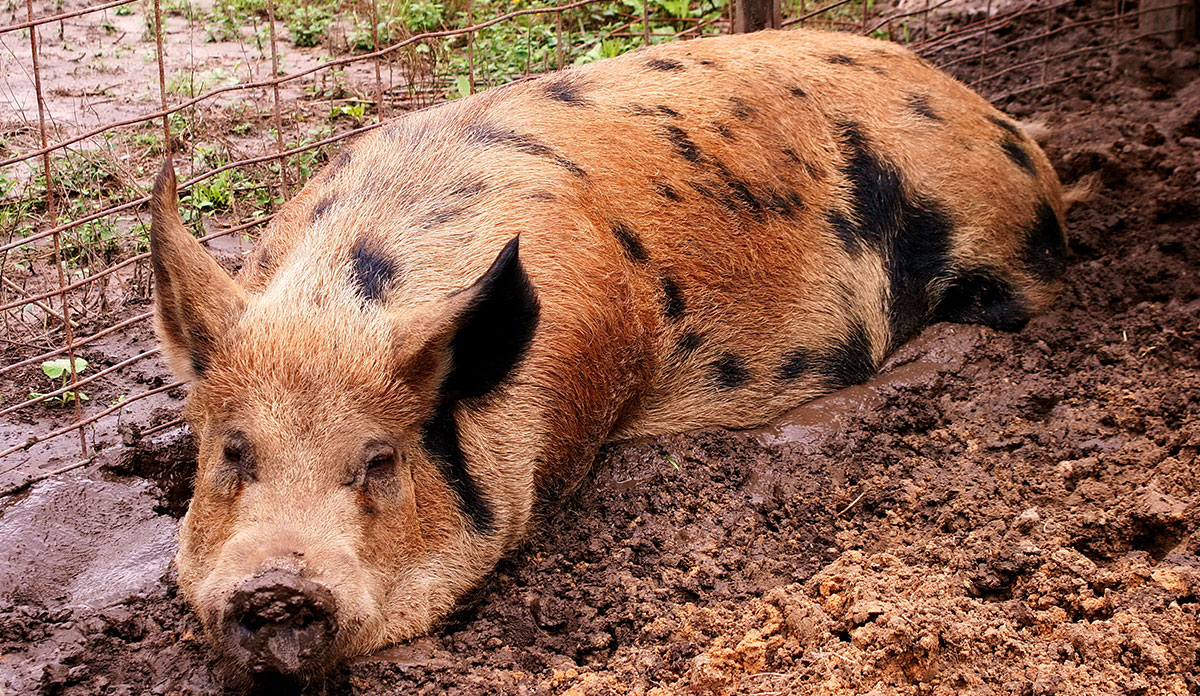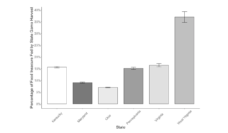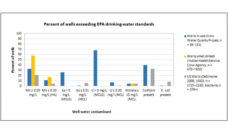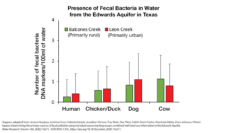Communities of color and low-income communities are disproportionately harmed by environmental pollutants. This environmental injustice is seen around the world as many industries pollute the water, air, and soil of nearby residents. In North Carolina, the state’s nine million hogs are disproportionately located near Black, Hispanic, and Native American communities.
North Carolina hogs are predominantly housed in large concentrated animal feeding operations (CAFOs) that produce 10 billion gallons of waste each year—more than the fecal waste produced by North Carolina’s entire human population. This hog waste is typically collected in uncovered pits and then sprayed onto fields as fertilizer. The land is unable to absorb the massive amounts of manure, and these practices can spread pathogens and chemicals that pollute the air and water. Contact with pathogens from hog waste may cause various health issues in humans, including diarrhea, vomiting, or nausea, which are collectively referred to as acute gastrointestinal illness.
In our study, recently published in Science of the Total Environment, we examined the association between industrial hog operation exposure and emergency department visits for acute gastrointestinal symptoms in North Carolina. Acute gastrointestinal illness is often severely painful and emergency department visits in North Carolina cost over 40 million dollars a year. Researching the health effects associated with industrial hog farms helps to quantify the impact of environmental injustice on human health.
For each North Carolina ZIP code, we used the number of nearby hogs and the distance to each permitted hog CAFO to calculate the hog CAFO exposure. We compared emergency department visit rates in ZIP codes with the highest hog exposure to the rates in ZIP codes without hog exposure.
We observed a 11% increase in the rate of acute gastrointestinal illness in high hog exposure areas compared to areas without hog CAFOs. This increase was higher when examining rural areas alone, where hog CAFOs are often especially dense. Rural American Indian and Black residents in high hog exposed areas experienced gastrointestinal illness at higher rates than their peers living in rural areas without hog CAFOs.
The poultry industry in North Carolina has also expanded over the last decade. Many poultry CAFOs are located near hog CAFOs, and people living near multiple CAFOs may face an increased risk of illness compared to people who do not. Our study found that the association between CAFO exposure and gastrointestinal illness was highest in areas with high exposure to both hog and poultry CAFOs.
Furthermore, hog waste pits can overflow during heavy rains, causing fecal bacteria to contaminate the waterways. In our analyses, we saw that the association between high hog CAFO exposure and acute gastrointestinal illness was the strongest during the week after heavy rain. Because climate change will cause hurricanes and heavy rain events to increase in intensity and frequency, our findings point to an escalating public health crisis requiring proactive measures.
Our findings highlight the environmental injustices affecting Native American and Black communities in rural eastern North Carolina.
Our study is unable to definitively conclude that hog CAFOs alone cause an increase in gastrointestinal illness. This is, in large part, because polluting facilities, including CAFOs, are disproportionately placed near other polluting facilities and in under-resourced communities, which masks the harmful effects of a single source or cause. However, our findings highlight the environmental injustices affecting Native American and Black communities in rural eastern North Carolina.
Our results are supported by studies that have found high concentrations of pathogens downstream from hog CAFOs after heavy rain. Our next paper will focus on the joint effect of hurricanes and hog CAFO exposure in North Carolina, as hog CAFOs are most concentrated in hurricane-prone eastern North Carolina.
Removing hog CAFOs from heavy rain-prone areas may reduce acute gastrointestinal illness. Relocating hog CAFOs located in flood plains or near poultry CAFOs may improve community health and reduce health disparities. Unless actions are taken to greatly reduce CAFO exposures, climate change may likely exacerbate existing environmental racism in eastern North Carolina.
Photo via Getty Images














